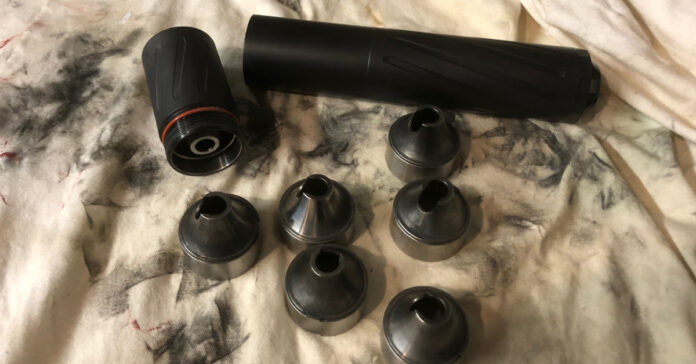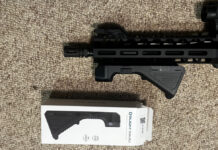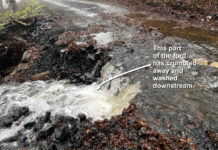
We lit our first fire in the wood stove yesterday. It’s been in the 30s at night, and when we wake up in the morning, the house is in the low 60s, so my wife turns on either the electric baseboard heater in her office or the heat pump for the whole house and brings the temperature up to 67 or 68 degrees. The only good thing about using the heat pump is that it is relatively efficient when the outside temperatures are above 40 degrees.
As the temperature in my basement man cave dropped into the low 60s, I decided it was time. I lit a fire and had it up to 68 degrees in less than an hour. By late afternoon, the temperature in the basement was a toasty 73 degrees and the rising heat helped the upstairs reach 71. I only added fresh wood twice and then let the fire die out in the evening. As a result, it took only six pieces of wood and some kindling to heat the entire house. That’s pretty efficient, too.
Of course, the daytime temperatures are in the 50s, so heating the house doesn’t take much effort right now. When it’s in the 20s and the wind is howling, we’ll be burning 24 or more pieces of wood per day.
This is the earliest we’ve used the wood stove, but the damp air pushed our way by the remnants of Hurricane Ian made the air chilly. The stove not only heated the room, it knocked out the humidity, making it feel warmer.
Suppressor Disassembly
After I cleaned all the rifles last week, I set about cleaning the suppressor for the first time. Technically, it would be more correct to say I attempted to clean it. While the device was easy to remove from the rifle, opening the body to remove the baffles was impossible. I could remove the end cap using the tool they provided, but I could not unscrew the two sections of the body.
I had screwed them together using just my hands, but unscrewing them with my hands proved to be impossible. Apparently, the built up carbon was causing the two sections to stick together.
I considered using a pipe wrench or channel lock pliers, possibly in conjunction with my vice, but held off. I did not want to either ruin the paint job or dent the suppressor’s body. Instead, I turned to Google. The suggestions were as follows:
- Apply penetrating oil on the threads, wait 15 minutes and try again.
- Apply penetrating oil, fire some bullets through the suppressor to heat it up, and then give it a twist.
- Use two strap wrenches.
- Combine options 2 and 3.
- Send it back to the manufacturer and let them deal with it under their warranty.
I went with option 1 and nothing happened. I did it multiple times, including soaking it overnight, and still no luck.
Option 2 meant re-cleaning my already cleaned guns, and that was annoying enough that I skipped to step 3, using strap wrenches. Unfortunately, I don’t have two. I just have one designed to remove oil filters. It didn’t do the job on its own.
On my weekly trip to town, I stopped by my friendly hardware store to buy a strap wrench. They don’t have one, but they have a two-pack, one medium and one small. It’s only $17.95, so I splurge. Back at home, I apply and tighten the two strap wrenches, making sure I am turning each one the proper direction. A quick turn and the suppressor body opens easier than the lid on my peanut butter jar. It was anticlimactic, but convinced me the $17.95 was well spent.
Suppressor Cleaning
Now that the suppressor is open, I tip it upside down to pour out the baffles, but only the top two come out. The others are stuck. I am prepared for this. When I bought the Banish 30 suppressor, I bought their baffle removal tool. I whip it out, add the 30-caliber brass tip, screw it into the suppressor and start cranking it. Sure enough, it broke each baffle free and pushed them out.
Boy, are they dirty. It looks like I fired 500 rounds instead of less than 50. Yikes! No wonder things were stuck together. This was a good reminder that far more crap flies out the front of your rifle than gets blown back onto the bolt carrier group via the gas system. I am doubly glad I got a user-serviceable suppressor because I can only imagine how hard it would be to clean if you could not open it up. I don’t think soaking it or spraying CLP down the center would do it. It also makes me fear what a rimfire suppressor must look like after a range session, as they are supposed to be even dirtier.
I wiped the baffles off with a rag, sprayed them liberally with my favorite gun solvent, wipe, and repeat, several times. I sprayed the inside of the suppressor tube and jammed a rag down it using a cleaning rod to rotate it and force it up and down, cleaning the interior. The parts are getting cleaner, but not clean, so I let the solvent soak. The two baffles furthest from the muzzle are bright and shiny, but those closer to the rifle’s muzzle remain dingy. I sprayed everything again, left it in my plastic cleaning tray, and came back the next day. Still not like-new shiny. That’s when I decided I needed to step it up.
It’s back to the internet to watch a few videos on cleaning suppressors. I’m not doing anything wrong, but while watching one video, I realize something Silencer Central calls the blast chamber isn’t coming out of my suppressor tube. I look in there and it’s not moving. In fact, it looks permanently mounted. After a few frustrating moments, I call Silencer Central and explain my problem. Their friendly tech support person tells me, “Oh, you have one of the new models. We started welding those in place because it helps retain the zero after you remove and replace the silencer.”
Good to know. Hey, Silencer Central, you need to update your videos or at least add a pinned comment letting people know the blast chamber no longer comes out.
The rep is helpful and we have a nice discussion about reassembly and discuss the benefits of ultrasonic cleaning versus tumbling the parts in a brass tumbler. He recommends ultrasonic cleaning.
Ultrasonic Cleaning
It’s just my luck that ultrasonic cleaning is preferred because while I have a brass tumbler, but do not own an ultrasonic cleaner. I am familiar with them, however, because the armorer at the police department had one and loved it. So I do some research and I decided I don’t need a professional model that holds multiple handguns or the long models that hold rifles. I go on Amazon and buy a $70 model that had some good reviews from gun owners and pictures of BCGs before and after.
While I am buying it specifically for the suppressor, I will use it on my pistols and rifle parts. Although I do my best to keep all my guns clean, I expect they will be cleaner than ever in the next few weeks.
Augason Farms Food
While shopping for the ultrasonic cleaner, Amazon kept showing me things I might also like. One of them was a #10 can of Augason Farms Gluten-Free Black Bean Burger Mix for $12.98. This catches my attention because $12.98 for a #10 can of any kind of long term storage food isn’t a good price, especially with inflation. I don’t care about gluten free or vegetarian, but I read more, and I like what I see. Each can is 34 servings. The first four ingredients are black beans, rice, oats, and yellow peas. There is no added sugar. I have plenty of black beans and lots of rice on hand, but the convenience of having a mix is what sold me. All we have to do is add water, stir, wait a bit, shape it into a patty, and fry it on a frying pan.
Always on the lookout for cost-effective additions to my long term storage food, I add two cans to my shopping cart. Then I shopped around for more, hoping to find other Augason Farms deals, but there was nothing else that caught my fancy or impressed my wallet. In the end, I added a third can to my cart.
If you’re looking for a good buy on long-term storage food in a #10 can, check out the Augason Farms Gluten-Free Black Bean Burger Mix for $12.98 at Amazon.com.






